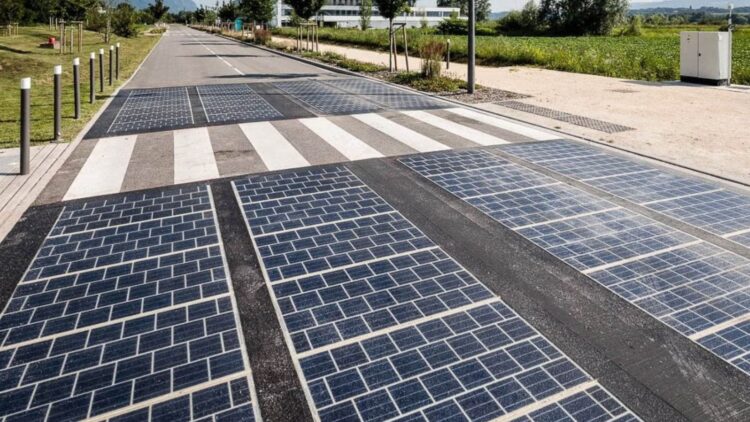With most of the focus on making roads green being focused on cars, we have somewhat forgotten about all the infrastructure that we should also attempt to fix and make a lot more sustainable for our future. One of the pieces of infrastructure where going green would make the most sense is highways, as they are quite big and any positive changes would go on for miles and make all our transport more ecological. One of the ways that we can make this happen is by making our roads be solar roads, creating a photovoltaic highway, but while these could be a good idea, there are plenty of things to consider.
Photovoltaic highways, the future or just a pipedream
This idea is not new and has been tested in a few parts of the world and the results are quite mixed, with some resounding successes and some epic failures that we would need to correct before there is mass implementation. Solar roads or photovoltaic highways are, as their name indicates, roads that can produce their own electricity thanks to solar panels encapsulated in resistant layers of materials similar to asphalt. This would allow them to generate electricity not just from the sun, but also kinetic energy from vehicles going on top of them as well as protect the delicate panels.
Countries like France, China, and even the United States have already tried to implement this concept, as it is really tempting. Roads get repaired and repaved periodically so it would not be too big of a hassle to incorporate the new technology into them and it is a flat surface that would allow for a lot of energy collection that, as of right now, is just doing nothing other than being traveled on.
The problem is that the results do not match the hype, energy generation was below expectations, the costs were quite high and the materials are still not ready for a full scale implementation. However, the state of Georgia is not giving up so soon and they are now proposing a pilot project for a functional solar highway that everyone could use.
The Georgia, pilot project known as The Way is turning a section of Interstate 85 into a real-world lab for sustainable road transport. Stretching over 29 kilometers, this initiative is all about testing out greener infrastructure courtesy of the Ray C. Anderson Foundation, a group known for pushing eco-forward ideas.
To start off, the team installed a series of Wattway solar panels directly onto the roadway. These panels were not developed in the US, they come from France, created by Colas in collaboration with the French National Institute of Solar Energy and they had already been tested in parts of Europe, where they showed some promising early results. But with this new American partnership, the technology is getting fine-tuned to better handle the unique challenges of U.S. roads.
The project started small way back in 2016, with just a small stretch of access to the Georgia Tourist Information Center, but since then more infrastructure has been created and it is now expanded to Peachtree Corners, Along with this geographical expansion, other mobility innovations are being tested in these real-world urban environments which will help with the future of transport.
Since this is still a pilot program results have not been announced, although the fact that they are continuing the project 10 years on is encouraging for those who wish to see these initiatives continue and improve. There is still a lot of work to do wen it comes to understanding the different materials that would be suitable for the different road conditions that will be encountered. heavy traffic, rain, heat, and wear and tear under different climates are just some of the variables that will need to be taken into account should this project survive and go on to be implemented.

